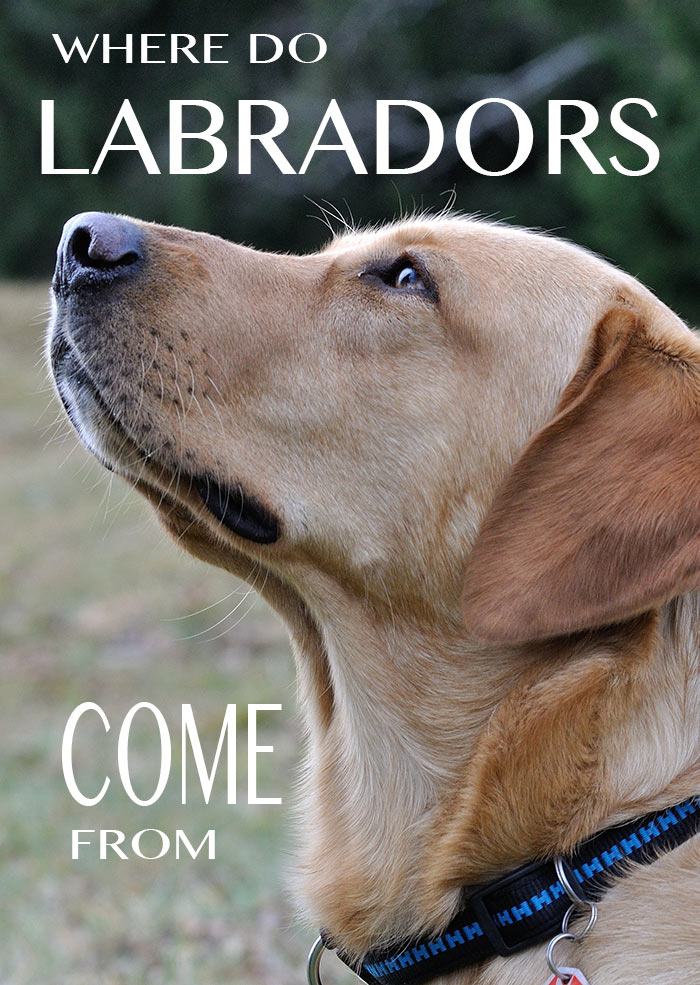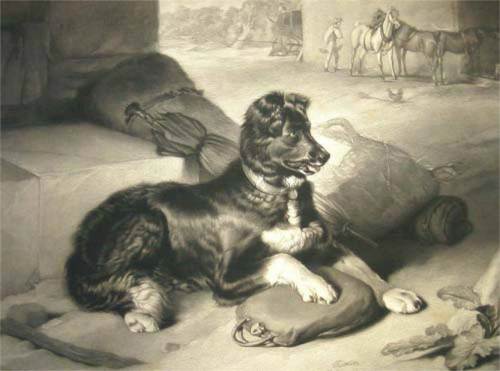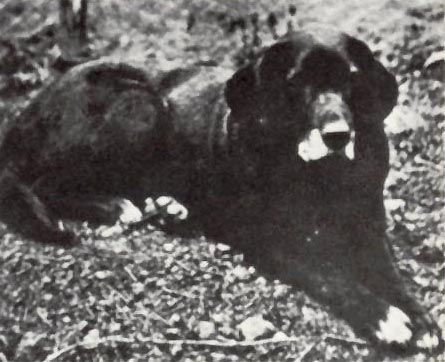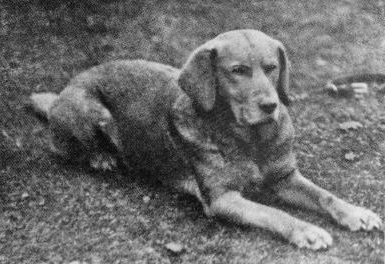The Complete Labrador Retriever History
The complete journey through Labrador Retriever history is a fascinating one. The original breed stock came from Newfoundland and not Labrador at all, although their passion was always retrieving. The Labrador Retriever’s history began with a fishing dog known as the St John’s Water Dog. They excelled at swimming, diving and of course retrieving nets, lines, ropes and even lost catches. Throughout their history the Labrador Retriever breed has been cooperative, intelligent, driven and hard working. But their roles have evolved over time, and so have their looks, temperament and of course the purposes they are bred for.
Contents
- Original locations.
- The St John’s Water Dog.
- What did Labrador Retrievers look like historically?
- Early Labrador Retrievers.
- How their characteristics have changed through time.
Where Do Labradors Come From?
It seems reasonable to assume that our much loved and lovable Retriever is called a Labrador Retriever, because it retrieves things and comes from Labrador in North America!
In fact the dogs that formed the foundation of the Labrador breed in England in the 1800s, were imported not from Labrador but from Newfoundland.
Two areas that tended to get lumped together for general discussion purposes.
What is more, those Newfoundland dogs were almost certainly not natives of Newfoundland at all. Let’s investigate.
Our story really gets going, in the harsh and inhospitable region that was 18th Century Newfoundland.
The dogs of Newfoundland
When we think of Newfoundland dogs, we tend to think of the large heavy and very hairy black dog whose breed carries the Newfoundland name. A breed that was long thought to be the ancestor of the Labrador.
Newfoundland had been colonised at various times in history, but had been largely uninhabited for around 200 years when European settlers arrived.
When Europeans began to visit and later colonise the island of Newfoundland, there were almost certainly no dogs there at all.
The peoples who settled there and fished in the rich waters around the coast, brought their own dogs with them.

Richard Wolters and the history of the Labrador Retriever
American Labrador enthusiast and trainer Richard Wolters wrote a detailed history of The Labrador Retriever in 1981
He was given access to some important archives and historical documents, by The Kennel Club and Her Majesty the Queen’s own Sandringham Kennels, and by several families whose ancestors were instrumental in establishing the breed.
Wolters described the early settlers to Newfoundland as ‘tough characters’ – deserters from the British fishing fleet. Hard men who settled and survived in a hard environment.
The fishermen’s dogs
Wolters notes that there are no records of any native dogs on the Island and that the majority of settlers were fishermen and hunters from Devon in the South West of England.
Wolters believes that these men brough their dogs with them from England and that their hunting dogs were the ancestors of the dogs that became known as Newfoundland dogs.
Today we think of Newfoundlands as large even giant and very hairy dogs with thick wavy coats, dogs from which some have concluded the Labrador Retriever may have descended. But Wolters believes it was the other way around.
He thinks that the smaller fishermen’s dogs with their oily short coats that are the forebears of the Labrador, were also of the ancestor of the Newfoundland and that the bigger dog was bred up in size to cope with the heavier work of hauling carts in the inhospitable climate.
The St John’s Water Dog
Let’s have a look at that smaller dog, because we know that he is the ancestor of the world’s most popular dog. His name is the St John’s dog, and he still existed in Newfoundland until a few decades ago. We even have photos of him.
Life on Newfoundland was always about fishing. It was a summer fishing colony, before being permanently settled and the abundant fish supplies were much prized by the British Authorities.
So much so, that for a long time permanent settlement was discouraged and even forbidden.
The resourceful people that defied the authorities and made their homes in this cold wilderness developed an unusual relationship with, and dependence on, the dogs that they brought with them.
By breeding from the most useful of these dogs, some important characteristics were fixed in dog population there. And by the early the St. John’s Water Dogs of Newfoundland were beginning to get quite a reputation as something rather special.
There is no doubt that the St John’s dog or St John’s water dog was the ancestor of the modern Labrador Retriever. And that its descendants formed the basis for our Labrador Retrievers today.
If Wolters is correct, it is also the ancestors of the much larger Newfoundland breed. But what was so special about these dogs?
The amazing skills of the St John’s Dog
The name water dog comes from the role that the St Johns dogs played in the fishing communities where they were found.
Historical documents tell of dogs that were as at home in the water as they were on land. They specialised in retrieving nets, lines, ropes, and even dived underwater to retrieve fish that had slipped from their hooks.
The St John’s dogs worked alongside their human companions in a remarkably co-operative way, and were much valued by them.
Life in Newfoundland in the 18th and 19th century
If you are interested in this period of history and would like to know more about the early settlers of Newfoundland and their dogs, do try and get a copy of Richard Wolters’ book.
Wolters paints a vivid picture of the world these dogs inhabited. Put together in a large hardback book packed with fascinating information and wonderful images.
What did the St John’s dog look like?
The St John’s dog had a dense, oily waterproof coat and thick tail though his ear carriage was probably more primitive and forward facing (and it must be said more healthy) than that of the floppy eared dog we know today.
He was oblivious to cold and happy to swim in exceptionally icy conditions. A characteristic that many of you will recognise in our modern day Labradors.
Some St John’s dogs had short coats, some had longer coats.
The Newfoundlanders probably preferred the shorter coat as it was more practical in icy water.
Many longer coated dogs were exported to England
An early painting of a St John’s dog is by famous artist Edwin Landseer. If you take a look at the dog, you’ll see it looks as much like a border collie as it does a Labrador. It has a longish coat and plenty of white fur among the black.
The painting is entitled: Cora A Labrador ‘female dog’
Landseer also painted the larger Newfoundland dog and it is interesting to note that it too is black and white, not black as we know it today.
We have to forward in time a few more years before we have a photograph of a St John’s. And then we have a dog that looks much more like the modern Labrador.
Nell – a St John’s Dog
You can’t spend much time reading about Labradors and their ancestors without coming across a copy of this very old photograph.
The dog in the image is Nell, and Nell was about twelve when the photo was taken in 1867.
She belonged to the Earl of Home, and is an example of the type of early St John’s dogs that were imported to England from Newfoundland in the 19th Century.
Markings of the St John’s dog
Although Nell has white toes you can still very much see the origins of the modern Labrador in her face and the set of her ears, and in her neat body and short coat.
In addition to white markings on feet and often on the face too, St John’s dogs typically had a white chest patch that we still occasionally see in Labradors today.
Although the patch is not favored by show dog enthusiasts it is tolerated in the working gun dog community, especially in yellow labs where it isn’t so obvious to the eye. I have personally owned several yellow labs with white chest marks
By the turn of the century, the smooth coat had been established as a breed characteristic and the Labrador Retriever was truly on its way.
The end of the road
Sadly, by the beginning of the twentieth century, the St Johns dog was heading for extinction.
According to Wikipedia, the new taxation place on dog ownership in North America played its part, as did the rabies quarantine controls set up in the UK.
The last examples of the St John’s water dog died in the 1980s.
Despite their demise, these dogs left behind them a legacy that would soon provide us with the most popular dog breed in the modern world. Our wonderful Labrador Retrievers.
The first Labrador Retrievers
The key to the beginnings of the Labrador breed was the work of two English Aristocrats: the 2nd Earl of Malmesbury, and the 5th Duke of Buccleuch. And the key to the establishment and survival of the breed was their two sons.
James Harris
James Harris was the 2nd Earl of Malmesbury, in addition to his life as a member of parliament, the young James devoted his life to sport. Specifically to shooting.
Malmesbury imported some St John’s dogs in the early 1800s and began breeding them for the purpose of working as shooting companions.
Walter Scott
Just a few years later, a Walter Scott, the 5th Duke of Buccleuch established a similar kennels breeding from imported St John’s dogs in Scotland
But it wasn’t to be until a chance meeting between the sons of these two men, that Labrador Retriever breeding became truly established in the UK.
Without that chance meeting between the sons of these two aristocrats – the two isolated kennels and their individual breeding programmes, may not have survived.
According to the records of the Buccleuch Estate, the 6th Duke of Buccleuch and the 3rd Earl of Malmesbury met whilst shooting in the late 1880s.
Malmesbury made a gift of two male retrievers to the Duke, who mated them to the female dogs that descended from those imported by his father.
And the puppies that resulted are the ancestors of the Labrador breed we know and love today. The Buccleuch Kennels still exists today and is still producing top quality Field Trial winning Labradors.
The aristocrat’s dog
One of the early references to Labrador Retrievers in our literature can be found in Colonel Hawker’s Advice to Young Sportsmen published in 1833.
Hawker was mixing with the aristocracy where these new dogs were becoming popular.
The book “Advice to Young Sportsmen’ offers a fascinating insight into the way in which dogs were treated and trained, in the 19th Century – there are drawings of a fearsome looking device called a ‘check collar from breaking pointers’ and talk of ‘flogging dogs with a whip or switch’.
No positive reinforcement training back then!
Colonel Hawker
Hawker uses the term Newfoundland and St John’s dog interchangeably, but he describes the type of Newfoundland dog that the shooting man should acquire as “by far the best for any kind of shooting, oftener black than any other color, and scarcely bigger than a pointer. He is made rather long in the head and nose, pretty deep in the chest; very fine in the legs; has short or smooth hair; does not carry his tail so much curled (as the larger Newfoundland) ; and is extremely quick and active in running, swimming, or fighting.”
Hawker notes that “Their sense of smell is hardly to be credited. Their discrimination of scent, in following wounded pheasant through a whole covert full of game, or a pinioned wildfowl through a furze break, or warren of rabbits, appears almost impossible.”
He also counsels “A water-dog should not be allowed to jump out of a boat, unless ordered so to do, as it is not always required; and, therefore,needless that he should wet himself, and everything about him, without necessity” Every Labrador owner can picture that eventuality!
One final quote from the author which the gun dog enthusiasts among you will appreciate – he says “If you want game, take old dogs. Young ones, however fleet and well broken, know little more than the ABC of their business, while old ones are up to every kind of trick.”
Working Retrievers
So, even by the early 1830s, when Hawker was writing, the reputation of the St John’s dog or Labrador dogs as it became known – perhaps to differentiate it from the larger Newfoundland that were already becoming popular as house dogs – was spreading.
And between the 1880s when our two aristocrats had their chance meeting, and the 1930s the Labrador Retriever became firmly established as the darling of the British shooting community.
There is no doubt that the popularity of the St John’s dogs amongst the sporting community in the UK was due to their extraordinary ability as working retrievers and all round hunting companions, and their amenable good nature.
Yet over in America, there was yet no sign of this new breed at all. Hunting and shooting folk were predominantly using the Chesapeake Bay Retriever for waterfowl, and the springer spaniel for flushing game on land.
Let’s take a look now at the Kennel Club’s role in the next important phase in the development of the Labrador as a breed.
Registration with the Kennel Club
In 1903 the Kennel Club in England declared the Labrador Retriever a recognised breed. But the American Kennel Club did not follow suit until 1917.
Right up until 1928 there were very few retrievers of any kind registered with the AKC.
Then gradually during the 1930s wealthy Americans began importing dogs from British Kennels and to discover the Labrador’s talents for themselves.
The split in the Labrador breed
It seems that no sooner had the Labrador breed become well established, in England, and in America, than a division in type began to develop
The fashion for breeding and exhibiting dogs was really taking off on both sides of the Atlantic, and the bloodlines of dogs bred for exhibiting, and the bloodlines of dogs bred for hunting, began to slowly diverge.
You can find out more about this divergence in my article looking at the difference between working type and show type Labradors.
But by the latter decades of the twentieth century, the differences in type were well established.
Any color as long as it’s black
We haven’t talked much about color yet. For in the shooting community the Labrador Retriever that was being established in the late 1800s and early 1900s was almost always a black dog.
Yet some of these early Labradors carried the genetic code that would enable them to produce brown puppies, and some carried the code for yellow.
Until 1892 all the Labradors recorded were black – though some had some white markings.
But in that year, two brown puppies were born on the Buccleuch estate in Scotland.
The chocolate Labrador had arrived. But it was to be another sixty years before he became popular.
A few years later in 1899 and we have the first yellow Labrador on record. His name was Ben of Hyde, and he belonged to Major Radcliffe. The popularity of the yellow Lab grew steadily over the next few years, but black was and still is today, the preference of the shooting man and woman.
The Genetics
If you would like to know how two black Labrador could give birth to chocolate or yellow puppies check out the color charts and information in my article on coat color inheritance.
Bear in mind that for many years, chocolate was called liver. It was not considered very desirable as a color at all. In fact it is highly likely that many non-black puppies were simply drowned at birth!
The rise and rise of the Labrador
Whatever their color, the amazing working ability of this happy and hardy dog, has been nurtured and protected down through the generations.
Not only are Labradors the most popular pet dog in the USA and the UK, they are also now the most popular working retriever in the world.
No mean achievement for a small fishermens’ friend who found fame in the harsh environments of newly settled Newfoundland
References
- The Labrador Retriever, Richard A Wolters, 1981
- Instructions to Young Sportsmen, Lt. Col Peter Hawker, 1833
- Buccleuch Gundogs
- The Retriever, Dog and Wildlife Blog

Free Labrador Updates!
Get my training tips, news, reviews, and the latest from The Labrador Site delivered to your inbox






Pippa thank you for a great article. What do you make of all of the early evidence of silver Labs that is surfacing as archivists digitize historic newspapers and make them available online to the general public? I keep seeing ads and articles posted online by advocates for the idea that silver Labs are purebred and have been around in England (albeit in relatively small numbers, but present nonetheless) since well before the Kellogg Kennel of the states supposedly bred them in the 1950s. Have you seen it? Some of it is rather convincing to me and it would be interesting to get your take on it. Barring counterfeit records, which I would expect could easily be discovered, the recently-presented evidence appears to solidify what they had already been saying for years about silver as a very recessive but genuine color within our breed.
Hi there, Pippa has written a great article on silver Labs which you can access here: Silver Lab – The Facts About Silver Labrador Retrievers
Hello Danielle, We are so sorry that your wonderful family dog is very old now and in pain,
it is so hard to let go. We had a loving dog like yours for 17 yrs. and Sage had the same symptoms
as yours and a vet. helped us to gently put him down. Loss of any kind is heartbreaking and we
feel lost in handling our feelings. I can hardly recommend the book, “Man’s Search For Meaning”
by Victor Frankl, This book is well written and known around the world. He teaches you how to
deal with things out of our control and to take the power that you have to make positive decisions
to find meaning again and move forward. Take that power and concentrate on the wonderful love
you gave him and carry the fire forward, the blessings you received, you can carry the light. Jacquie
I’m really interested to know if it’s possible to acquire a proper, what used to be called, Otter tail Labrador? Maybe in the US they’re known as St John’s Labrador? We had one when I was a child, called Sasha. She was smaller than a standard retriever, much stockier with shorter legs, a white spot on her chest, a line down her snout to her nose, had webbed feet and would swim underwater. She would dive in after a fish or, when my father was hunting, to retrieve his kill. She was short haired with a thick oily black coat. My father got her in the late 1960s. She lived to 14 years old and had one litter. Her daughter Dyska sadly was run over by a truck when she was just 2 years old. Can anyone help me with this, or point me in the right direction? Thank you.
Buy some “Pawz” dog shoes, the purple ones fit Labradors, they are thick rubber balloons that are
made in US, used to be called “Sticky Pawz”, great help for old dogs who loose control of their back legs,
gives them traction to get up, stops them slipping. I used to buy them online, but they are now selling them in Australia. Up to my tenth Labrador.
A wise person once said to me,(when I was grieving my dog) dogs don’t live as long as us, so you get to have many more in your life and they are ALL wonderful.
I have a fourteen-year-old St. John Labrador. She, Blue Michelle Bailey (first name is after the jazz club in NYC called BlueNote because my son’s trumpet practices and husband’s love of jazz music soothed her every time it was played.) She was totally comfortable. She has always been an inside dog since we adopted her in Galveston, Texas in 2001 when she was four months old. She is the absolute best dog in the whole wide world. She slept with my son every night during grade school. Swam to us whenever we went swimming and when fishing she would swim out to catch our bobbers or the fish we reeled in! She will check every door, open with her nose, until she found me. If I was in the bathroom and she didn’t really want to come in she would nudge the door open, it would always slowly close, and then she would nudge it open until she was sure that I was there. Blue is the best at playing hide-and-seek. Naturally I would hide and you can hear her walking and sniffing and checking every room and walking back to the rear of the house and then to the front until she could find me and she never ever gave up! When she found me she was the happiest girl in the whole wide world! We love her more than anything and none of us have ever had such a relationship with an animal. She is our greeter, soother, making sure you are okay in the middle of the night, sleeping against your bed to make sure she knew when you woke up. She has gray around her mouth, her eyebrows, her face (slightly). She poops while she is lying down, and that is a natural no-no. She knew it. She can’t help it. She can’t hardly make a step down and two steps up to go potty. We are so sad and scared. We love her so much. Watching her slip to step down a step because of hip-dysplasia is agonizing, she has difficulty walking , period..but she does it anyway because she wants to be close or she wants to hear us, or she needs something…our bestest dog in the whole wide world. What do we do?
It is so hard to know what to do when our friends get old. Some people have found this article, and all the comments on it, a comfort https://www.thelabradorsite.com/knowing-when-to-let-go-of-your-labrador/
I have read the History of these wonderful Dog’s before. I have at present ,one beautiful boy nearly four years old. Fox Red and the temperament of an Angel. He is my last and I could not have had a better. All our Labs and retrievers and Springers have been the most amazing trouble free friends you could ever have. Knowing them is to love them. They are the best!
Thank you for your interesting FB page, Pippa. I have had Labs for thirty years, all of the gundog type, each one with his or her own personality. These wonderful dogs have greatly enriched my life, smart, sweet, humorous, and always ready for a walk and a swim. No better animal companion can be found.